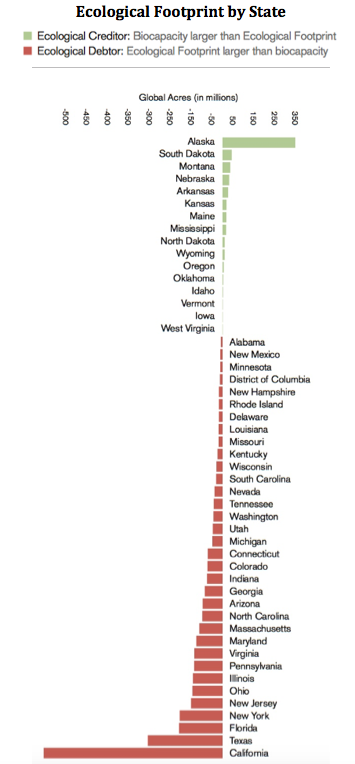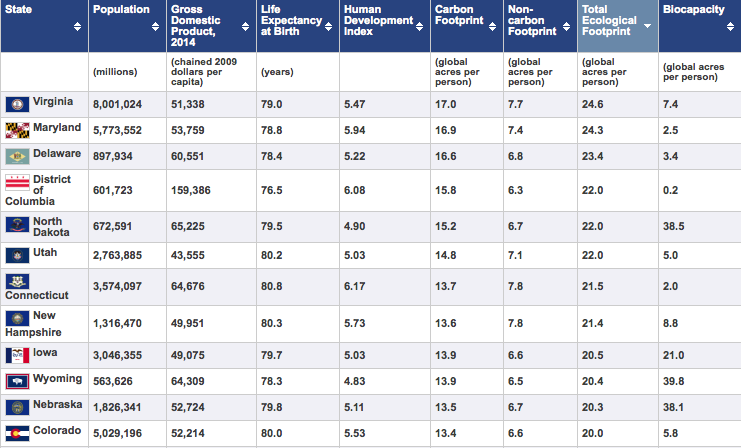
Transmitting news and information about sustainable endeavors in Coastal Virginia and beyond. Updated Weekly.
|
Is the U.S. Ecologically Overdrawn?
Posted 15 July 2015 by Carol Brighton
While the U.S. is considered biologically rich, it is consuming natural capital at twice the domestic replacement rate. That’s the gist of a new analysis issued by the Oakland, CA non-profit Global Footprint Network. In a news release, the think tank estimates that July 14 marks the day that the U.S. surpassed an annual ecological budget putting it in the red from an accounting standpoint.
To hasten a transition from ecological deficit to sustainibility, the Global Footprint collaborated with Earth Economics of Tacoma, Washington to prepare a comprehensive national natural resource review entitled “State of the States: A New Perspective on the Wealth of Our Nation.” The report details the ecological footprint and resource availability of 50 states and the District of Columbia. According to David Batker, executive director of Earth Economics, “Every state should be using these measures right along with employment and income. Securing prosperity in the 21st century requires using informed measures, like the ecological footprint, to improve policy, shift investment and fix our ecological budget. This report reveals problems and provides solutions.”
Resource production and consumption rates vary tremendously from state to state. California, Texas and Florida have the highest overall ecological deficits (see graphic at right). But when considering the footprint per capita, Virginia tops the list along with Maryland and Delaware (see graphic below).
The ecological footprint is calculated as the sum total of consumed resources and includes plant-based food and fiber products, live-stock and fish products, timber and other forest products, urban infrastructure, and forest to absorb its carbon dioxide emissions from fossil fuels. The ecological footprint is then compared to how much biocapacity or productive area is available within each state to provide needed resources and services. States run an ecological deficit when resource demand is supplied by imports and overharvesting or when more carbon is emitted than is sequestered.
The report concludes that transitioning to renewable energy is one of the most effective ways to create resiliency and reduce the ecological footprint of states and the nation. Carbon is responsible for 67% of the ecological footprint of the entire United States, which is up from 53% in 1961.
States Ranked by Total Ecological Footprint Per Capita
|
Check the Archive for Previous Posts
All Rights Reserved. Disclaimer.
 Source:
Source: Source: Global Footprint Network -
Source: Global Footprint Network -